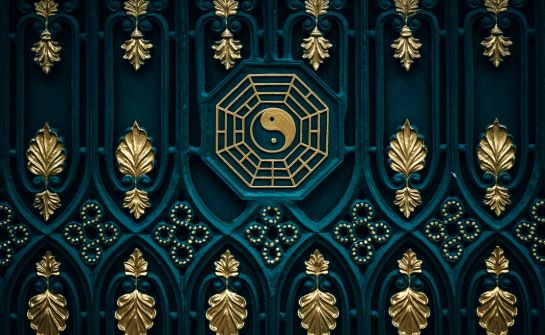Healing symbols have been used throughout history to represent the profound connection between the physical and spiritual realms. From ancient cultures to modern practices, these sacred symbols hold deep roots in our collective consciousness, offering spiritual power and guidance for those on a journey of healing and growth.
Each symbol carries different meanings, acting as a bridge between human beings and the divine, often facilitating spiritual awakening and fostering a sense of balance and harmony.
In this blog, we’ll explore some of the most powerful symbols of healing, including Reiki symbols, the Rod of Asclepius from Greek mythology, and the timeless Tree of Life. These symbols not only represent spiritual growth and protection but also provide tools for clearing negative energy and achieving inner peace. Whether it’s the Flower of Life’s intricate geometry, the Lotus Flower’s resilience, or the Yin-Yang symbol’s call for harmony, these images resonate deeply with the universal quest for wholeness.
Join me as we uncover the meanings behind these ancient emblems, their role in spiritual practices like Reiki energy and distant healing, and how they continue to inspire modern interpretations. Through understanding these symbols, you’ll gain insights into their profound ability to heal, protect, and guide us on our journey to divine love and eternal life.
Reiki Symbols and their Healing Power

Reiki symbols are powerful tools used by Reiki practitioners to channel and amplify healing energy. Rooted in ancient Japanese spiritual traditions, the sacred symbols serve as a bridge between physical manifestation and spiritual realms. Each symbol carries its own unique vibration, allowing practitioners to access and direct Reiki energy to direct the healing energy for the mind, body, and soul.
Some of the most commonly used Reiki symbols include the Cho Ku Rei (Power Symbol), which enhances energy flow and clears negative energies, and the Sei He Ki (Harmony Symbol), which focuses on emotional healing and restoring balance. Another significant symbol is the Hon Sha Ze Sho Nen (Distance Symbol), which transcends time and space, making distant healing possible. These spiritual symbols are not just abstract images but are deeply intertwined with the spiritual growth of both the practitioner and the recipient.
For a Reiki practitioner, using each sacred symbol acts as a tool that assists them in aligning their intentions with divine love, enabling them to remove negative energy and promote a state of balance and harmony. The sacred nature of these symbols makes them invaluable in clearing emotional blockages and facilitating a deeper connection to one’s spirit guide. By integrating these symbols into healing sessions, Reiki energy becomes a catalyst for profound transformation, promoting peace and holistic well-being.
Reiki symbols demonstrate how spiritual power can manifest through simple yet meaningful designs. Their universal appeal lies in their ability to connect human beings to the infinite potential of healing energy, offering a pathway to harmony, balance, and a deeper understanding of the self.
The Rod of Asclepius: A Symbol of Modern Medicine
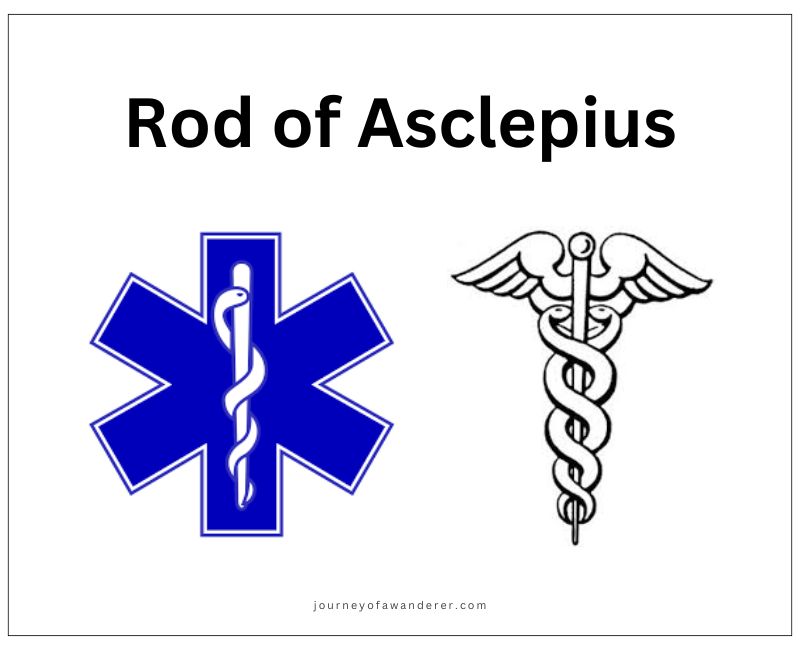
The Rod of Asclepius, a timeless emblem of healing, is one of the most recognized symbols of modern medicine. Originating from Greek mythology, this powerful symbol depicts a single serpent entwined around a staff, representing the deep connection between physical healing, spiritual growth, and ancient wisdom. It is named after Asclepius, the Greek god of medicine and healing, who was revered for his ability to restore health and cure ailments.
The intertwined snake is more than just a striking visual—it carries deep spiritual meaning. In ancient cultures, snakes were often associated with transformation, renewal, and the shedding of negative energy, much like how they shed their skin.
The serpent in the Rod of Asclepius symbolizes the ongoing process of healing and regeneration, while the staff represents stability and support, essential aspects of medical practice. While it is often confused with the Caduceus, which features two snakes and wings, the Rod of Asclepius holds a singular focus on healing rather than commerce or negotiation. Its presence in modern medical emblems reflects its enduring significance as a representation of health, wellness, and spiritual power.
Beyond its role as a medical emblem, the Rod of Asclepius reminds us of the holistic nature of healing. True healing addresses not just the physical symptoms but also the emotional and spiritual aspects of human beings. This ancient symbol serves as a bridge between the wisdom of Greek mythology and the practices of modern medicine, inspiring practitioners to approach healing with balance, compassion, and a deeper understanding of life’s interconnectedness.
The Tree of Life: Deep Roots and Eternal Life
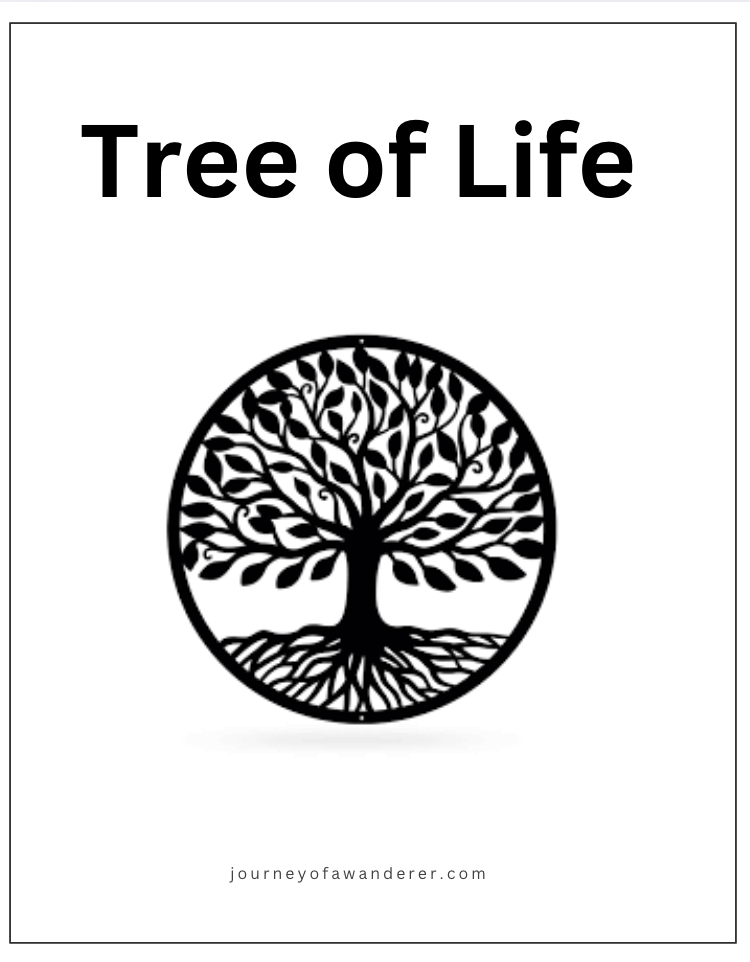
The Tree of Life is a sacred symbol found across several ancient cultures, representing the interconnectedness of all life and the spiritual growth of human beings. With its deep roots and expansive branches, this powerful symbol illustrates the balance between the physical and spiritual realms, serving as a timeless reminder of eternal life and divine love.
In ancient Egypt, the Tree of Life symbolized creation and the flow of divine energy through all living beings. In other cultures, it represented wisdom, strength, and the cycle of life, death, and rebirth. The Tree’s roots delve deep into the earth, grounding us in the physical world, while its branches reach toward the heavens, connecting us to higher spiritual power. This duality reflects the journey of spiritual awakening, where growth happens both inwardly and outwardly.
The Tree of Life also holds significant meaning in modern spiritual practices. It symbolizes personal transformation, reminding us to stay grounded while striving for higher understanding. Its intricate design speaks to the deep connection between human beings and the universe, emphasizing how all life forms are intertwined in a web of energy.
This symbol is also a source of inspiration for those seeking healing and balance. Just as a tree can weather storms by staying rooted, we too can find strength and resilience through spiritual growth. The Tree of Life encourages us to embrace life’s challenges as opportunities to grow, evolve, and connect more deeply with ourselves and the divine. Its enduring message of eternal life and interconnectedness continues to resonate, making it a powerful emblem of healing and hope.
The Flower of Life: A Sacred Geometry of Creation
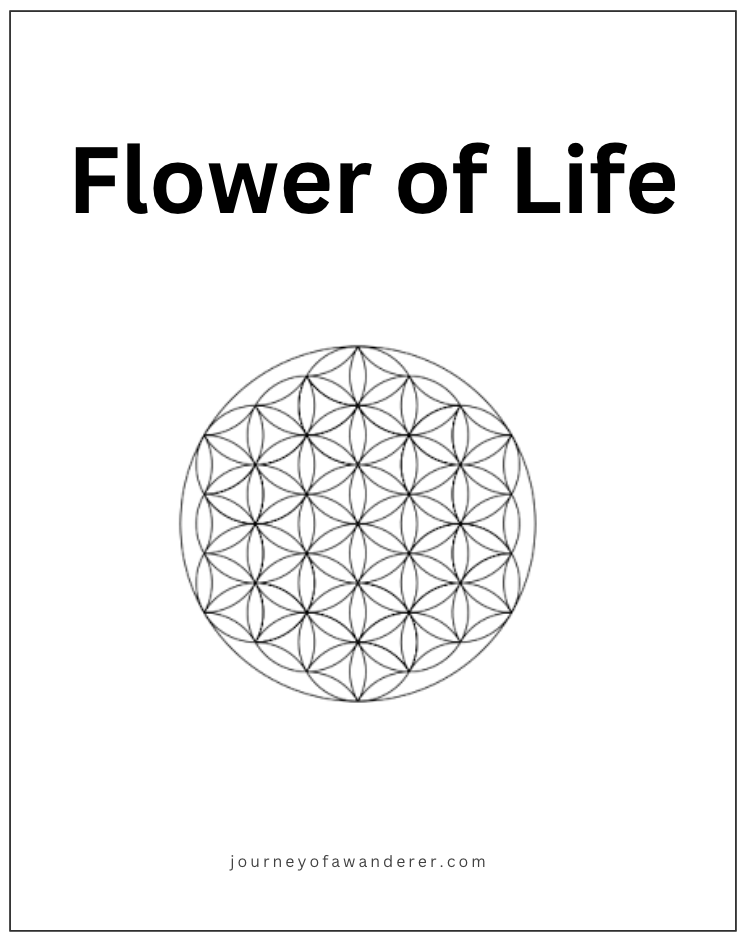
The Flower of Life is a mesmerizing symbol of sacred geometry, consisting of overlapping circles that create a harmonious and intricate pattern. Found in ancient cultures across the globe, this powerful symbol represents the interconnectedness of all life and the blueprint of creation. Its timeless beauty and profound meaning have made it a cornerstone of spiritual growth and healing.
The Flower of Life is believed to hold the essence of the universe within its design. The overlapping circles form a geometric matrix that symbolizes the interconnected energy of all living beings. Ancient civilizations, including those in Egypt and Greece, used this sacred symbol to convey concepts of unity, balance, and divine love. Its precise geometry reflects the natural patterns found in the world, from the spiral of a seashell to the arrangement of petals on a flower.
Spiritually, the Flower of Life is a tool for awakening and healing. It is said to represent the life force that flows through human beings and the universe, promoting harmony and alignment with divine energy. Many believe it holds the power to clear negative energies and support spiritual awakening by creating a connection between the physical and spiritual realms.
In modern times, the Flower of Life is used in meditation, healing practices, and even as a protective emblem. Its intricate design helps individuals focus on the unity and beauty of creation, fostering inner peace and spiritual power. Whether used to balance energy, connect with the divine, or inspire creativity, the Flower of Life remains a profound symbol of the sacred connection between all things. Its message of unity and wholeness continues to guide those on a journey of spiritual growth and healing.
The Yin-Yang Symbol: Balance and Harmony in Healing
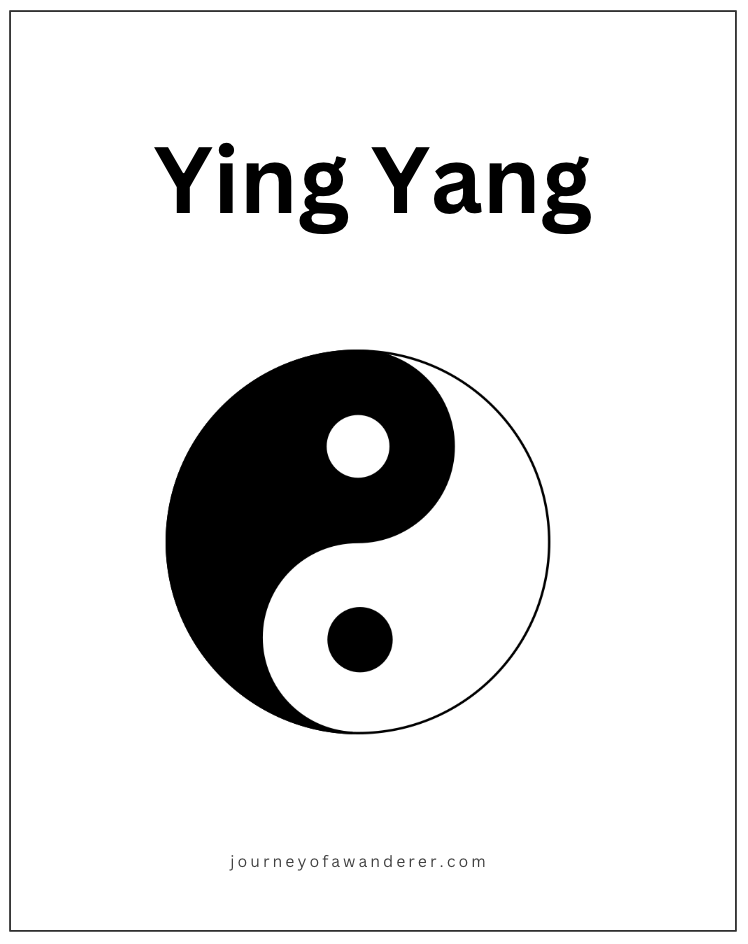
The Yin-Yang symbol is one of the most recognizable sacred symbols, representing the delicate balance between opposing forces in the universe. Originating from ancient Chinese philosophy, it embodies the interplay of light and dark, masculine and feminine, and positive and negative energies. This timeless symbol serves as a guide for spiritual growth and a reminder of the harmony that arises from embracing life’s dualities.
The Yin-Yang symbol consists of two intertwined halves—one dark and one light—each containing a small circle of the opposite color. This design signifies that opposing forces are not only interconnected but also interdependent. Within every light, there is a shadow, and within every shadow, there is light. The Yin-Yang symbol reflects the natural rhythms of life, where balance is achieved through the dynamic interplay of opposites.
In healing practices, the Yin-Yang symbol is a powerful reminder of the need to balance energies to achieve well-being. It teaches that spiritual power comes from embracing both strengths and vulnerabilities, as each plays a vital role in personal growth and spiritual awakening. For instance, in Traditional Chinese Medicine, the concept of Yin and Yang is central to understanding the body’s energy flow and maintaining harmony within the mind, body, and spirit.
The Yin-Yang symbol also provides guidance for clearing negative energy and restoring balance. By recognizing the dualities within ourselves—such as rest and action, giving and receiving—we can cultivate greater inner peace and alignment. This balance not only aids physical and emotional healing but also fosters spiritual growth, helping us connect more deeply with the divine and with others.
Ultimately, the Yin-Yang symbol is a timeless emblem of harmony, urging us to honor the contrasts in life and find peace in their coexistence. Its profound wisdom serves as a foundation for achieving balance, both within ourselves and in our relationships with the world around us.
The Palm Tree and Lotus Flower: Nature’s Symbols of Resilience and Renewal
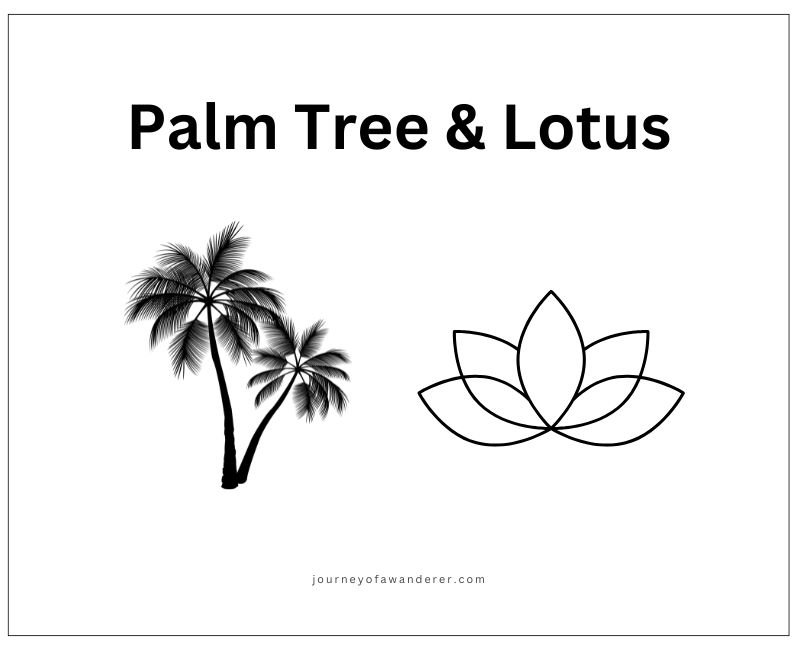
Nature offers some of the most profound spiritual symbols, and both the palm tree and the lotus flower carry deep meanings of healing, resilience, and spiritual growth. These symbols, rooted in ancient cultures, remind us of the strength and beauty found in overcoming challenges and embracing transformation.
The palm tree is often seen as a symbol of peace, resilience, and spiritual power. With its ability to thrive in harsh environments and withstand strong winds, the palm tree embodies strength and flexibility. In many cultures, it represents victory, renewal, and the deep roots necessary for growth. For human beings, it serves as a reminder that even amidst life’s storms, we can remain grounded while reaching toward the light.
On the other hand, the lotus flower carries its own sacred significance. Known for its ability to rise from muddy waters and bloom into a pristine flower, the lotus symbolizes spiritual awakening and the journey of overcoming adversity. In spiritual practices across ancient Egypt, India, and other cultures, the lotus represents purity, enlightenment, and the triumph of the spirit over obstacles. Its petals, which open one by one, are seen as a metaphor for spiritual growth and self-discovery.
Both symbols connect deeply to the human experience of healing and transformation. The palm tree’s ability to bend without breaking reminds us to stay flexible and adaptable in life, while the lotus flower’s journey through the mud inspires hope and renewal even in the darkest times. Together, these nature-inspired symbols offer powerful lessons about resilience, spiritual power, and the beauty that emerges from enduring life’s challenges.
By meditating on these sacred symbols, we can find strength in their wisdom and apply their teachings to our own lives. Whether through the stability of the palm tree or the transformative journey of the lotus flower, they remind us that growth and healing are always possible, even in the face of adversity.
The Hamsa: A Universal Symbol of Protection and Blessings
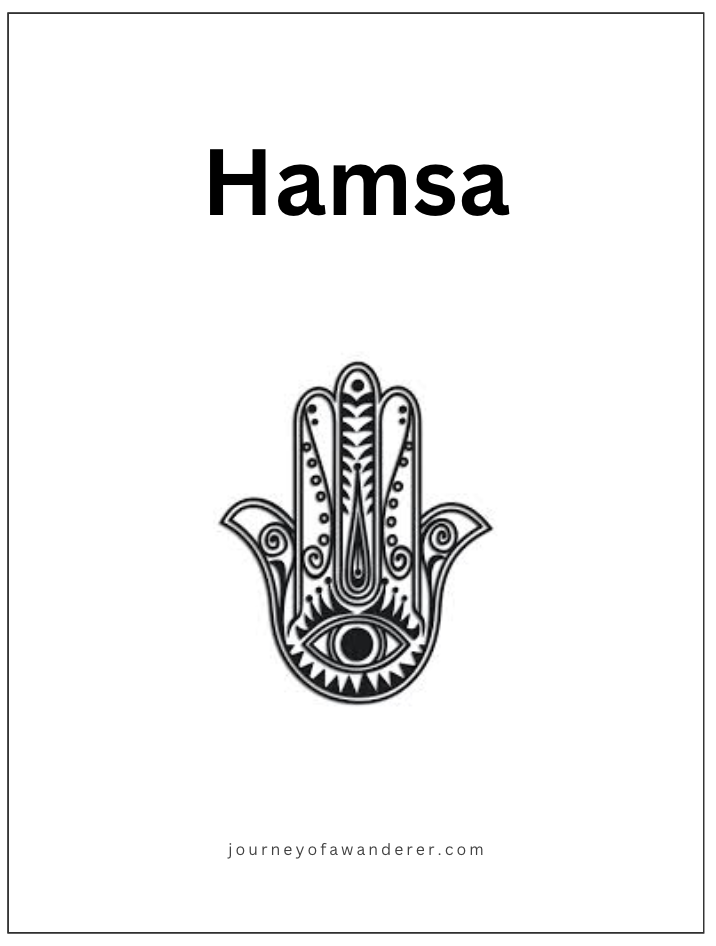
The Hamsa, often referred to as the “Hand of God” or the “Hand of Fatima,” is a revered symbol of protection, blessings, and divine guidance. Found in numerous cultures and spiritual traditions, the Hamsa represents a powerful shield against negative energies and a beacon of spiritual growth and well-being.
The Hamsa is typically depicted as an open hand with an eye in the center of the palm. This eye, also known as the “evil eye,” serves as a guardian against harmful intentions, deflecting envy and negativity directed at its bearer. The hand itself symbolizes divine protection, acting as a sacred barrier between the individual and unwanted energies. Its deep roots in both ancient Middle Eastern and North African cultures have made it a universal emblem of safety and balance.
In spiritual practices, the Hamsa is often associated with the flow of divine love and blessings. Its five fingers are said to represent the five senses, encouraging individuals to live mindfully and remain aware of the beauty and interconnectedness of life. For some, it also symbolizes the balance between the feminine and masculine energies, aligning with the principles of spiritual harmony.
The Hamsa is commonly worn as jewelry, displayed in homes, or used as a talisman in rituals. Its design may include intricate patterns, religious symbols, or sacred geometry, amplifying its spiritual power. Some traditions believe the upward-facing Hamsa wards off negative energy, while the downward-facing version invites blessings, abundance, and positivity.
Incorporating the Hamsa into your spiritual journey can serve as a reminder of your connection to divine protection and guidance. This powerful symbol not only guards against external harm but also encourages inner peace and spiritual awakening. By embracing the Hamsa, you can cultivate a sense of safety, positivity, and alignment with the divine on your path to healing and growth.
The Ankh: A Symbol of Eternal Life and Spiritual Power

The Ankh, often called the “Key of Life” or the “Cross of Life,” is one of the most enduring symbols of ancient Egypt. Revered for its deep spiritual significance, the Ankh represents eternal life, divine love, and the interconnectedness of the physical and spiritual realms. It is a powerful emblem of healing and spiritual awakening, used for thousands of years to convey profound truths about existence and the soul’s journey.
The Ankh’s design—a looped top with a cross-shaped base—is simple yet deeply symbolic. The loop is said to represent the eternal and cyclical nature of life, while the vertical and horizontal lines symbolize the union of opposites: masculine and feminine, earth and heaven, and the physical and spiritual. Together, these elements convey the harmonious balance necessary for spiritual growth and transformation.
In ancient Egyptian culture, the Ankh was often depicted in the hands of gods, pharaohs, and priests, symbolizing their connection to divine power and the gift of eternal life. It was believed to channel life force energy, making it a sacred tool in rituals for healing, protection, and spiritual guidance. The Ankh was also used in funerary practices, signifying the soul’s transition from the earthly plane to the eternal.
Today, the Ankh continues to inspire those seeking spiritual awakening and deeper understanding. It is often worn as jewelry or used in meditation as a reminder of the soul’s infinite potential and the unity of all life. Its timeless message encourages us to look beyond the physical manifestation of life and connect with the spiritual essence that binds all human beings.
By incorporating the Ankh into your spiritual practice, you can draw upon its ancient wisdom to foster healing, balance, and spiritual power. This sacred symbol reminds us of the enduring nature of the soul and the divine energy that flows through all of creation, offering a path to eternal life and profound transformation.
The Dharma Wheel: A Symbol of Spiritual Awakening and the Path to Enlightenment

The Dharma Wheel, also known as the “Wheel of Law” or “Dharmachakra,” is a powerful symbol in Buddhism and other Eastern traditions. It represents the teachings of the Buddha, the journey of spiritual awakening, and the interconnectedness of all life. With its deep spiritual meaning and timeless relevance, the Dharma Wheel serves as a guide for those seeking healing, balance, and enlightenment.
The design of the Dharma Wheel typically features a central hub, spokes, and an outer rim, each carrying profound symbolic significance. The hub represents the core of spiritual practice and the stability needed to ground oneself on the path to enlightenment. The spokes, often numbering eight to signify the Eightfold Path, symbolize the principles of ethical conduct, mental discipline, and wisdom, which are central to spiritual growth. The rim signifies the unifying energy that holds the path together and ensures the journey remains aligned with the teachings of the Buddha.
In spiritual practice, the Dharma Wheel is a reminder of the cyclical nature of life and the importance of breaking free from the cycle of suffering, known as samsara. It encourages individuals to follow the Eightfold Path to achieve liberation, healing, and inner peace. The turning of the wheel symbolizes the spreading of wisdom and the transformative power of spiritual knowledge.
Throughout history, the Dharma Wheel has been used in rituals, teachings, and meditation to inspire mindfulness and connection to higher truths. It also reflects the balance between action, thought, and intention, which are essential for navigating life’s challenges and overcoming negative energies.
Modern spiritual practitioners embrace the Dharma Wheel as a sacred symbol of spiritual power and a guide for personal and collective healing. Whether displayed in a home, used in meditation, or worn as a symbol of faith, the Dharma Wheel reminds us to stay rooted in compassion, wisdom, and the pursuit of enlightenment. Incorporating the Dharma Wheel into your spiritual journey can serve as a powerful tool for growth and healing. It inspires us to embrace the teachings of ancient wisdom, find balance in the present moment, and align with the timeless principles of peace, harmony, and spiritual awakening.

